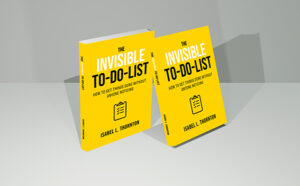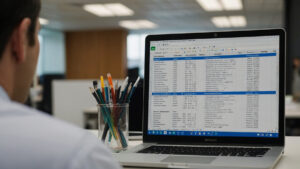We’ve all seen the headlines: “Top 10 Productivity Apps,” “How to Crush Your To-Do List,” or “Morning Routines of Highly Successful People.” But what if the real secret to getting more done isn’t about doing more—it’s about getting uncomfortable?
It might sound counterintuitive, but as Tess Alder reveals in her thought-provoking book, Habit Hacks for Happiness: How to build habits that actually serve you, discomfort is one of the most powerful—and overlooked—tools for unlocking peak performance, creativity, and long-term success.
Productivity Has a Comfort Problem
Let’s be honest: most “productivity hacks” are really comfort hacks. Color-coded planners, ambient playlists, and app automation help you feel in control—but do they actually make you grow?
In Habit Hacks for Happiness, Alder explains that modern society has wired us to chase ease. We want focus without friction, creativity without chaos, and results without risk. But this pursuit of effortless achievement is a trap. Why? Because true productivity isn’t born from feeling good—it’s forged in the discomfort of showing up when it’s hard, uncertain, or emotionally challenging.
Discomfort Creates Cognitive Traction
When you first try something difficult—like presenting a new idea, switching careers, or learning a complex skill—your brain goes into high gear. Neural circuits light up. Focus intensifies. You’re out of autopilot mode and into adaptation mode. That state of tension? That’s the birthplace of growth.
Discomfort gives your brain “traction.” It forces you to stop coasting and start problem-solving. Research on neuroplasticity (our brain’s ability to rewire itself) shows that unfamiliar challenges trigger the exact processes that build intelligence, creativity, and emotional regulation. Productivity without discomfort is like exercise without resistance—it just doesn’t work.
The Myth of Flow Without Friction
Many people chase “flow”—that sweet spot where time disappears and focus sharpens. But here’s the kicker: flow isn’t effortless. According to psychologist Mihaly Csikszentmihalyi, flow only happens when the challenge slightly exceeds your current skill level. In other words, discomfort is required.
Tess Alder puts it this way: “We want the magic of flow without the friction of failure. But friction is the fuel.”
So if you feel uncomfortable writing that first draft, launching that business, or learning that software? Good. You’re exactly where you need to be.
Real Examples of Productive Discomfort
Let’s look at how discomfort actually works as a productivity catalyst in real life:
- Public Speaking: Your first presentation might leave you breathless. But the nerves push you to prepare harder, clarify your message, and eventually master the stage.
- Cold Showers: Athletes and entrepreneurs use cold exposure to train mental resilience. It conditions the nervous system to stay calm under stress—an essential trait for high-stakes productivity.
- Tight Deadlines: While not ideal long-term, occasional time pressure forces your brain into laser-focus mode. It cuts procrastination and primes you for action.
In each of these cases, it’s not comfort that drives performance—it’s controlled, intentional discomfort.
The 5-Minute Discomfort Practice
Want to use discomfort as a daily productivity hack? Try this simple strategy:
- Pick a Task You’ve Been Avoiding
Something mildly unpleasant—writing a cold email, reviewing finances, outlining a tough project. - Set a 5-Minute Timer
Commit to just five focused minutes. The goal isn’t to finish—it’s to engage with discomfort. - Lean In with Curiosity
Observe your reactions. Are you anxious? Bored? Resistant? Stay with it. - Reflect on the Shift
Did the task feel as hard as you imagined? Did starting reduce the resistance? - Build Consistency, Not Perfection
Do this once a day. Momentum is more powerful than motivation.
This technique rewires your brain to associate discomfort with progress, not pain.
Rewriting the Productivity Narrative
Mainstream productivity culture often tells us to “optimize everything.” But in doing so, we risk stripping out the very challenges that create meaning and mastery. When you only pursue what feels efficient or comfortable, you plateau. Growth—and the productivity that stems from it—lives on the edge of challenge.
In Habit Hacks for Happiness, Tess Alder invites us to rewrite the narrative: “Productivity isn’t about doing more with less effort—it’s about choosing better discomforts.”
The Long-Term Payoff: Growth, Grit, and Guts
Over time, the small discomforts you lean into build something extraordinary: grit. You become the kind of person who shows up despite resistance, who pursues excellence over ease, and who views obstacles not as threats but as training.
That’s not just productivity—that’s transformation.
Your Next Step Starts with a Little Discomfort
So the next time you hesitate to take action because it feels uncomfortable, remember: that’s your cue. Not to avoid—but to begin.
Want to learn how to make discomfort your superpower in all areas of life? Grab your copy of Habit Hacks for Happiness: How to build habits that actually serve you by Tess Alder and discover practical strategies that help you grow stronger, smarter, and more purpose-driven—one habit at a time.
Author

Alan Saunders is recognized for producing books on Artificial Intelligence and digital wellness, where playful narratives and clear insights are featured. Guidance for concerned parents hoping to safeguard children in an ever-evolving digital world is often emphasized in his writing. Complex AI concepts and practical safety measures are presented in a manner that blends intrigue with accessibility, allowing readers to explore technology’s possibilities while maintaining peace of mind.





